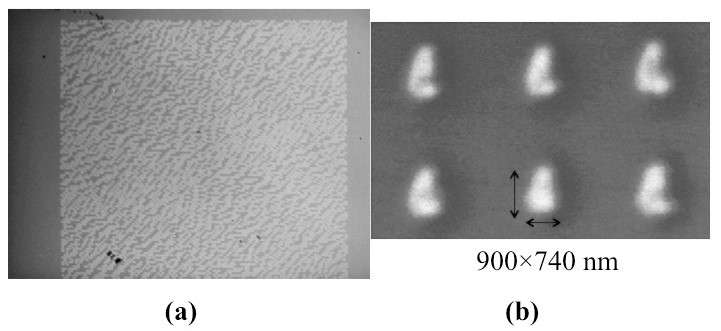Nano-magnets produce 3-D images

Conventional 3D displays, such as stereo displays with glasses and glass-free autostereoscopic displays, show two-dimensional images for each eye. Therefore, users experience incongruity and eyestrain owing to these pseudo-3D images. A holographic display produces an exact copy of the wave front of scattered light from an object, and hence, a realistic 3D display is expected. Holographic displays can reconstruct realistic 3D images, thereby eliminating the need for special glasses.
However, construction of holographic displays is difficult, as nano-sized pixels are required for reconstructing 3D images with a wide viewing-angle. Conventional holographic displays have a viewing angle of <3° and a pixel pitch of 10-100 µm.
Researchers at Toyohashi Tech have recently developed wide-viewing 3D holographic displays composed of nano-magnetic pixels.
These displays are driven by thermomagnetic recordings, and wide viewing-angles are achieved through the use of in-house-developed magneto-optic spatial light modulators (MOSLMs) composed of nano-sized pixels.
According to Associate Prof. Takagi, "The advantages of this approach are that the focused spot of a laser defines the pixel size, the MOSLM does not require special current or voltage drivelines, and the switching speed is about 10 nsec/pixel that is enough for real-time display. Therefore, the MOSLM can represent 3D movie because display media is a rewritable magnetic material. In addition, the magnetic hologram is stored for magnetic materials semi permanently. The viewing angle depends on pixel pitch size. In this study, we adjusted to the pixel pitch size of 1 μm after obtaining the pixel size of 1 µm."
This confirms, as previously stated, that a 3D display with 1-µm-pitch pixels can display holographic images at a viewing angles of over 30°. Therefore, this display constitutes an attractive option for visualizing 3D objects with a smooth motion parallax and without special glasses.
More information: K. Nakamura et al. Improvement of diffraction efficiency of three-dimensional magneto-optic spatial light modulator with magnetophotonic crystal, Applied Physics Letters (2016). DOI: 10.1063/1.4939448
Journal information: Applied Physics Letters
Provided by Toyohashi University of Technology


















